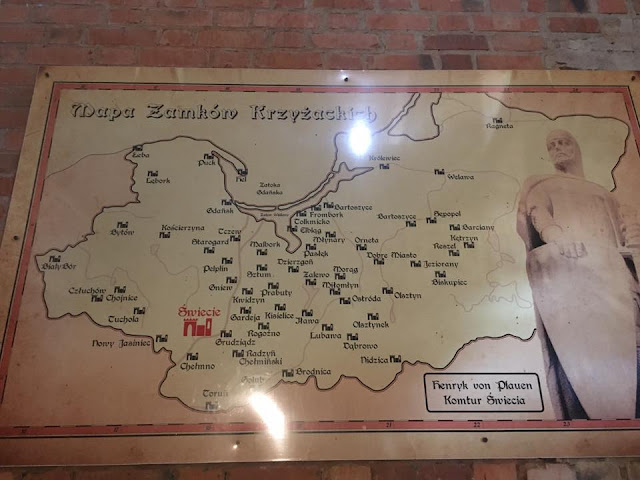Świecie Castle is a Teutonic castle built between 1335 and 1350. It is located in Świecie, Poland, and is part of a complex constructed by the Teutonic Knights in the Gothic architectural style. The castle is situated on a partially artificial embankment for protection against floods, offering a picturesque view from the bank of the Vistula and Wda rivers. It includes a circular tower with merlons.
The castle is currently a museum, with the tower and castle undergoing renovations. In 2019, the castle was unfortunately targeted by unknown perpetrators who stole bricks, resulting in severe damage to the 14th-century defensive wall.
Built on a square plan with a side measuring approximately 51 meters, the castle had an entrance gate located in the western curtain, connected to the outer ward by a bridge over the moat. It consisted of two perpendicular wings. The main wing, situated parallel to the Wda stream, was about 13 meters wide, had a basement, and encompassed three floors. Within it, there was a chapel and a chapter house or refectory. The courtyard, measuring 26 x 26 meters, was surrounded by cloisters. The castle was enclosed by a perimeter wall with four cylindrical towers at the corners. The tallest tower, with a diameter of 10 meters and a height of 34 meters, featured battlements and is currently inclined from the vertical by 106 centimeters, making it the most leaning tower in Poland accessible to tourists. The strategic location of the castle allowed it to control traffic on the Vistula River.
The castle was constructed by the Teutonic Order in the 14th century under the initiative of Günter von Hohenstein. It was built in a new location, separate from Prince Świętopełk II's stronghold, which likely existed within the outer ward. The castle was surrounded by defensive walls and a moat, comprising a two-part complex consisting of a convent house enclosed by a scarp and an outer bailey. The castle's access from the west was guarded by a fortified city. It was the only water castle in the Teutonic State. Although the foundations suggest plans for a four-wing castle, only two wings were completed. Notably, the castle featured four cylindrical towers in its corners. It served as the seat of commanders in 1410 and was briefly under Polish control during the Thirteen Years' War. From 1508 to 1772, it functioned as the seat of Polish royal starostes. In the second half of the 16th century, it was rebuilt in the Renaissance style by Jerzy Konopacki, the Chełmno castellan.
The castle suffered significant damage during the Swedish wars in the 17th century and was not rebuilt. Subsequently, it was partly demolished by Prussian authorities after 1772. In 1859, efforts began to protect the ruin, and a partial reconstruction took place after World War II. The castle ruins are open to the public, offering visitors the opportunity to explore the tower and basements. In the past, the castle was also used by various organizations for sports activities. During the interwar period, the ruins were managed by the Waterways Department and later by the German Water Inspection. Despite attempts to preserve the castle, surrounding walls deteriorated over time and were subject to vandalism.
















0 komentarze:
Post a Comment